The world’s declining fisheries could recover in less than a decade if management reforms are implemented in time, according to researchers. Researchers looked at 4,500 fisheries in the world, representing about 78 per cent of the reported global catch using state of the art bio-economic models. The researchers found that while the majority of fisheries […]
Stop screening for developmental delay
The Canadian Task Force on Preventive Health Care recommends against using a screening test to identify developmental delay in young children who show no apparent signs of delayed development. The recommendation applies to children aged one to four years old who have no visible signs, or whose parents have no concerns, of delay. Developmental delay […]
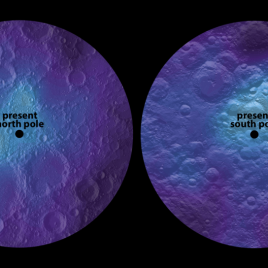
A new spin on the Moon
The moon once rotated on a different axis than the one it does today, according to researchers. Polar hydrogen deposits are located near the Moon’s poles, however their location is inconsistent with where ice would be expected to form with the current thermal environment of the moon. Researchers found that the Moon’s polar hydrogen deposits […]
Recipe for a waste-free world
A series of comment pieces discuss the circular economy – where industrial outputs become inputs so that goods at the end of their life turn into resources for other uses. In the first article Walter Stahel, who coined the concept of the circular economy, argues it is time to shift to a “resource-miser” economy. He […]
Conservations silver bullet
Removing invasive mammals has major benefits to an island ecosystem, according to a new study. As this type of conservation effort is expensive, researchers set out to understand the impact of this strategy. The benefits they saw “highlight the importance of this conservation measure for protecting the world’s most threatened species.” Original research paper published in the Proceedings of […]
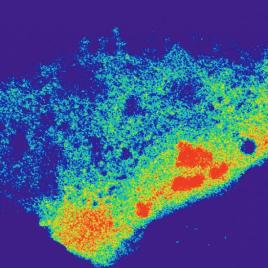
Tracking RNA in real time
By modifying the CRISPR-Cas9 system, typically used for genetic editing, researchers are able to visually track the movement of RNA in living cells. The researchers believe this could be used to study disease-related RNA processes. Many diseases are related to errors in RNA and RNA transcription, such as different cancers and autism. In the future […]
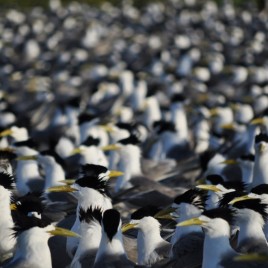
A bird’s eye view of birds
The view seen by humans (left) and drones (right) when trying to count seabird populations from either the ground or the air. (Image credits: Jarrod Hodgson) A new study compares the accuracy of monitoring of sea bird colonies by UAVs and traditional human ground counts and demonstrates that population estimates can be improved with this […]
How much warming has China caused?
As China has become increasingly industrialized over the past few decades its fossil fuel use has grown, along with its greenhouse gas emissions, and particulate air pollutants. Yet new research shows that its contribution to global warming has remained remarkably stable. Authors of this study show that China is responsible for about ten per cent […]
The next miracle cure – exercise
Physical activity and specific exercises have been shown to be effective in alleviating the symptoms of many chronic health conditions such as knee osteoarthritis, low back pain, and chronic obstructive pulmonary disease (COPD). However a new review shows these exercises are being under-prescribed by physicians. The authors suggest this is due to a lack of […]
The effect of urbanization on warming
Urbanization in China has considerably exacerbated the warming experienced by a large majority of the population, according to the authors of a new study. The authors conclude urbanization accounts for about one third of China’s observed warming. Researchers quantified the separate contributions of urbanization and other external forces to the observed warming in China. Using […]
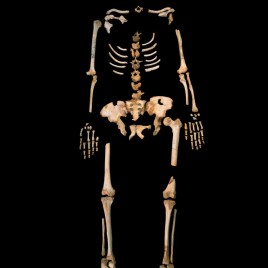
Filling in the family tree: The Sima de los Huesos hominins
Hominins found in the Sima de los Huesos (“pit of bones”) in northern Spain are more closely related to Denisovans than Neanderthals, according to genetic analysis. Until now it has been unclear how the 28 individuals were related to other hominins living during the Late Pleistocene. Analyzing the mitochondrial DNA lead the authors to conclude […]
Measuring the munchies – how much THC is in marijuana edibles?
A new way to more accurately measure the amount of cannabinoids in marijuana edibles was presented at the meeting of the American Chemical society March 15, 2016. In the past measurements were frequently inaccurate as the sugars, fats, and starches found in most edibles would clog the analytical device. By using dry-ice and a silica […]
Poor health in prisons
Canadians in jails and prisons are more likely to have mental health or substance abuse issues compared to the general population, according to a review of the available evidence. Additionally Canadians in jail or prison are more likely to attempt suicide. More than half of the individuals incarcerated in federal or provincial prisons and jails […]
Strengthening the link between Zika and microcephaly
Evidence supporting the link between the Zika virus and microcephaly has been found in a retrospective study of the outbreak in French Polynesia between October, 2013 and April, 2014. Researchers examined medical records to find cases of microcephaly between September, 2013 and July, 2015. They found eight cases of microcephaly during this time, seven of […]
Knowing your risk won’t change your behaviour
Increasingly genetic tests are being offered that suggest if you know your risk for something, you’ll be more likely to change your behaviour; but new research is suggesting this isn’t the case. In a review study authors found having information genetic risk had little or no effect on people’s diet, or smoking or exercise habits. […]
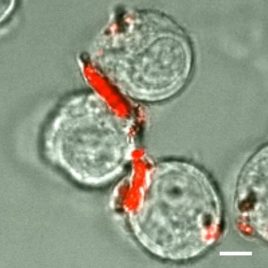
Improving the cellular backpack
Medicine can be delivered to specific parts of the body by fitting it inside a “backpack” and attaching it to white blood cells. This targeted drug delivery means other tissues of the body aren’t affected, and side effects are limited. Original research presented at a meeting of the American Chemical Society on March 17, 2015.